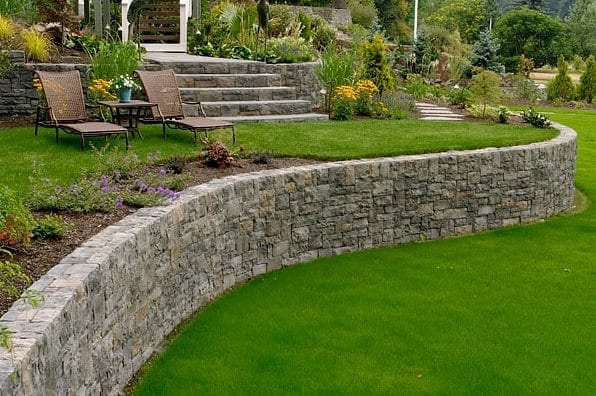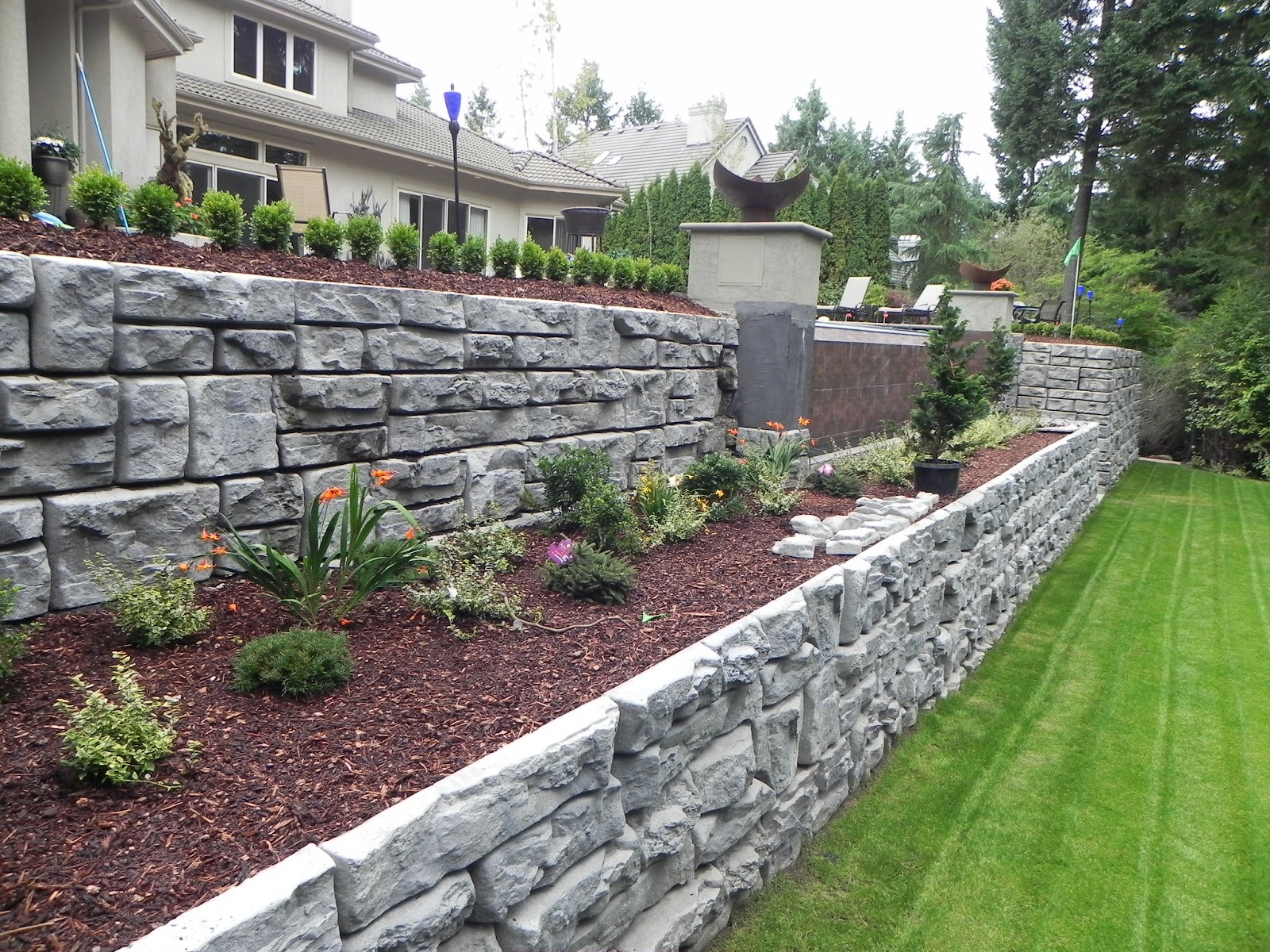Why You Need To Purchase Long Lasting Retaining Walls Sunshine Coast for Your Home
Why You Need To Purchase Long Lasting Retaining Walls Sunshine Coast for Your Home
Blog Article
Enhancing Property Security: The Role of Retaining Walls in Dirt Retention and Disintegration Control
Retaining wall surfaces stand as quiet guardians, playing a critical duty in soil retention and erosion control. By discovering the subtleties of different types, layout factors to consider, building techniques, and upkeep ideas connected with retaining wall surfaces, a much deeper understanding of their essential duty in improving residential property security emerges.
Value of Retaining Walls in Security
The significance of retaining walls in making certain security within landscapes can not be overstated. Keeping wall surfaces play a crucial duty in holding back soil, preventing erosion, and producing level surface areas in sloped areas. By offering architectural support, keeping wall surfaces assist to rearrange side stress brought on by dirt, preventing landslides and slippage. Along with improving the aesthetic appeal of a residential property, maintaining wall surfaces add to the general safety and functionality of outdoor rooms.
Keeping wall surfaces are especially necessary in uneven or irregular terrains where dirt erosion is an usual event. Without appropriate assistance, dirt disintegration can bring about the deterioration of landscapes, endangering the stability of frameworks and positioning risks to residents. Retaining wall surfaces act as obstacles, stabilizing the dirt and stopping it from changing downhill during hefty rains or other environmental stress factors.
Moreover, maintaining wall surfaces use long-term benefits by minimizing upkeep expenses linked with soil erosion and land instability. By spending in properly designed maintaining walls, residential property proprietors can make certain the long life and sustainability of their landscapes while promoting a risk-free and visually enticing atmosphere.

Kinds Of Retaining Walls for Disintegration Control
Frequently utilized in landscaping and civil engineering projects, various types of preserving wall surfaces offer as effective solutions for erosion control in varied terrain conditions. Gravity maintaining walls are tough frameworks that count on their weight to withstand the pressure of the dirt behind them. They are appropriate for reduced to medium elevation applications and are usually made from concrete or rock. Cantilever maintaining walls, on the various other hand, are designed with a thicker base and make use of a bar arm to stand up to the soil pressure. These wall surfaces are typically utilized in locations where area is restricted.
For taller walls or where room is a constraint, secured maintaining wall surfaces are frequently utilized. When choosing the proper type of maintaining wall surface for disintegration control, factors such as dirt make-up, wall surface elevation, and website problems need to be very carefully taken into consideration to make sure resilient security and efficiency.
Style Considerations for Soil Retention
The height and area of the keeping wall surface are vital elements that affect the general design. Designers must additionally consider the stress exerted by the maintained soil and possible side loads to guarantee the framework's security over time.
Moreover, the material option for the preserving wall surface is important in improving long life and performance. Concrete, hardwood, gabion baskets, and all-natural rock are common materials made use of in retaining wall surface construction, each with its one-of-a-kind benefits and factors to consider. Proper drain devices, such as weep holes and French drains, need to be integrated right into the layout to protect against water build-up behind the wall, which can cause architectural failure and erosion.
Building Strategies for Retaining Walls
When applying design factors to consider for effective soil retention, the building techniques for retaining wall surfaces play a critical duty in making certain architectural integrity and lasting security. The success of a retaining wall surface greatly relies on the building and construction techniques employed. One typical technique is the gravity wall surface, which relies on the weight and mass of the wall surface itself to resist the stress of the retained soil. Gravity wall surfaces are ideal for reduced to tool heights and are relatively simple to construct. Retaining Walls Sunshine Coast.
One more widely utilized construction technique is the cantilevered wall surface, which utilizes a concrete piece foundation that expands backwards into the kept dirt. This style offers added stability and is ideal for tool to high retaining walls. For taller frameworks, strengthened dirt strategies such as making use of geogrids or dirt nails can be used to enhance the wall's stamina and stability.

Maintenance Tips for Residential Or Commercial Property Security
To ensure long-lasting building stability, routine upkeep techniques are important for maintaining the integrity of keeping wall surfaces and protecting against disintegration concerns. Inspecting keeping wall surfaces occasionally is crucial to identify any type of indications of damages, such as splits, protruding, or leaning. Any kind of issues should be about his dealt with quickly to stop more damage. Cleaning the surface of the keeping walls can likewise assist preserve their architectural stability by removing dust, particles, and plant life that can damage the wall surface with time (Retaining Walls Sunshine Coast).
In enhancement to aesthetic you could try these out evaluations and cleaning, it is very important to inspect the drainage systems linked with the maintaining walls. Making certain that drains pipes are clear of blockages and functioning effectively can prevent water buildup behind the walls, which can lead to pressure and potential failing. Properly working drain systems are important for managing water flow and lowering the danger of erosion.
Frequently maintaining and monitoring preserving wall surfaces according to these tips can expand their life expectancy and add to the general stability of the home.
Verdict
In conclusion, retaining walls play an essential duty in enhancing property security by stopping soil disintegration and preserving dirt in location. Regular maintenance of retaining wall surfaces is vital to ensure long-lasting stability and security versus erosion.
For taller walls or where area is a restraint, anchored keeping walls are usually utilized. These walls utilize cables or strips that are anchored right into the dirt or rock behind the wall to give added support. When picking the suitable kind of keeping wall surface for disintegration control, variables such as soil structure, wall surface height, and website problems should be very carefully taken into consideration to ensure long-lasting stability and efficiency.
One typical method is the gravity wall, which depends on the weight and mass of the wall itself to stand up to read this article the pressure of the kept dirt. Cleansing the surface area of the keeping wall surfaces can likewise help maintain their structural stability by getting rid of dirt, debris, and greenery that can weaken the wall surface over time.
Report this page